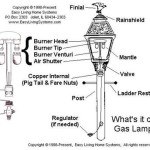How To Light A Pathway Outdoors
Outdoor pathway lighting enhances safety and security while adding aesthetic appeal to any landscape. Careful planning and execution are essential for achieving optimal results. This article outlines the key considerations and steps involved in effectively lighting an outdoor pathway.
Assess the Pathway and Surroundings
Begin by thoroughly evaluating the pathway's characteristics and the surrounding environment. This assessment informs lighting choices and placement strategies. Several factors should be considered:
- Pathway Length and Width: The pathway's dimensions dictate the number and spacing of lights required for adequate illumination.
- Existing Landscape Features: Trees, shrubs, and other vegetation can impact light distribution and should be factored into the planning process.
- Ambient Light Levels: Existing light sources, such as streetlights or neighboring properties, can influence the intensity and placement of pathway lighting.
- Desired Ambiance: Consider the desired atmosphere. A soft, subtle glow differs significantly from bright, security-focused illumination.
Choose Appropriate Lighting Fixtures
A variety of outdoor lighting fixtures are available, each with its own strengths and weaknesses. Selecting the right type of fixture is crucial for achieving the desired effect.
- Path Lights: Low-voltage path lights are a common choice, providing focused illumination along the pathway's edges.
- Bollard Lights: These taller fixtures offer broader illumination and are well-suited for wider pathways or areas requiring increased visibility.
- Step Lights: Recessed or surface-mounted step lights enhance safety by illuminating stairs and changes in elevation.
- String Lights: String lights can create a decorative ambiance, particularly for patios or less formal pathways.
- Solar Lights: Solar-powered lights offer a cost-effective and environmentally friendly option, requiring no wiring.
Determine Lighting Placement and Spacing
Strategic placement is critical for effective pathway lighting. The goal is to provide even illumination while avoiding glare and dark spots.
- Uniform Spacing: Maintain consistent spacing between fixtures to ensure uniform light distribution. The optimal spacing depends on the fixture type and desired brightness.
- Curves and Turns: Place lights closer together on curves and turns to enhance visibility and safety.
- Steps and Elevation Changes: Illuminate each step or elevation change with dedicated step lights to prevent accidents.
- Focal Points: Highlight specific landscape features, such as trees or statues, with strategically placed accent lighting.
Consider Power Source Options
Outdoor lighting fixtures can be powered by various sources, each with its own advantages and disadvantages.
- Low-Voltage Wiring: Low-voltage systems are safe and relatively easy to install, requiring a transformer to step down the voltage.
- Line Voltage Wiring: Line voltage offers greater power and is suitable for larger installations, but requires professional installation.
- Solar Power: Solar lights are easy to install and require no wiring, but their performance depends on sunlight availability.
Install the Lighting Fixtures
Proper installation is essential for ensuring the safety and longevity of the lighting system. Follow manufacturer instructions carefully for each fixture type.
- Wiring: Ensure proper wiring connections and secure any exposed wiring to prevent hazards.
- Grounding: Proper grounding is crucial for safety, especially for line-voltage systems.
- Fixture Placement: Securely mount or stake fixtures in the designated locations, ensuring stability.
Test and Adjust the Lighting
Once the installation is complete, test the lighting system thoroughly to ensure proper functionality and adjust as needed.
- Functionality: Verify that all lights are working correctly and that there are no wiring issues.
- Light Distribution: Check for even illumination and adjust fixture placement or spacing as needed to eliminate dark spots or glare.
- Timer Settings: If using a timer, program it to activate and deactivate the lights at the desired times.
Maintain the Lighting System
Regular maintenance is essential for ensuring the long-term performance and safety of the outdoor pathway lighting system.
- Cleaning: Periodically clean the fixtures to remove dirt and debris that can obstruct light output.
- Bulb Replacement: Replace burned-out bulbs promptly to maintain adequate illumination.
- Wiring Inspection: Inspect wiring regularly for damage and repair or replace as needed.

Pathway Lighting Ideas Yard Envy

11 Best Outdoor Pathway Lightning Ideas To Adorn Your Landscape

Outdoor Path Lighting That Enriches Your Space Perspectives

15 Stylish Landscape Lighting Ideas Garden Club Outdoor Path

Outdoor Lighting Tips For Your Best Pathway Nite Time Decor

Outdoor Lighting For Walkways Illuminate Your Pathway With Led Lights Ledmyplace

19 Best Landscape Lighting Ideas 2024

10 Best Outdoor Lighting Ideas Landscape Design Secrets A Piece Of Rainbow

25 Pathway Lighting Ideas For Amazing Landscape Solar Lights Garden

Hammond Solar Path Lights Set Of 4 Outdoor Lighting Landscape
Related Posts







